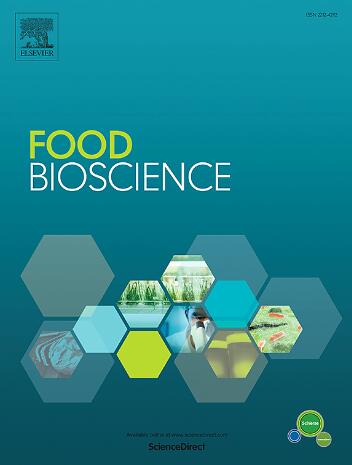Lipase-catalyzed synthesis of astilbin fatty acid esters: Effect of key reaction factors on catalysis and physicochemical properties of target products
IF 4.8
1区 农林科学
Q1 FOOD SCIENCE & TECHNOLOGY
引用次数: 0
Abstract
To improve the liposolubility and stability of astilbin, a series of astilbin fatty acid esters (ASE) with different carbon chain lengths were successfully synthesized through lipase-catalyzed transesterification. It was found that the substrate conversions were between 97.86 % and 99.29 % as determined by HPLC analysis. An isomerization reaction was found in the enzymatic transesterification reaction system, and the product was neoastilbin fatty acid ester. The pathway of this isomerization reaction was investigated and a high relative content of ASE (>90 %) was obtained by controlling the reaction time (24 h–48 h). Moreover, the underlying mechanism by which a high substrate molar ratio (acyl donor: astilbin/mM: mM) inhibited the hydrolysis of ASE was revealed. The products were purified using preparative thin-layer chromatography, and their structures were identified by mass spectrometry, 1H NMR and 13C NMR analysis. Subsequently, the liposolubility, temperature, and pH stability of ASE were explored. It was found that the liposolubility and temperature stability of ASE were higher than those of astilbin. Additionally, ASE exhibited pH-dependent stability, maintaining structural integrity in acidic conditions but undergoing significant hydrolysis, isomerization, and decomposition in alkaline conditions. This study may expand the application of astilbin in foods and functional foods.

求助全文
约1分钟内获得全文
求助全文
来源期刊

Food Bioscience
Biochemistry, Genetics and Molecular Biology-Biochemistry
CiteScore
6.40
自引率
5.80%
发文量
671
审稿时长
27 days
期刊介绍:
Food Bioscience is a peer-reviewed journal that aims to provide a forum for recent developments in the field of bio-related food research. The journal focuses on both fundamental and applied research worldwide, with special attention to ethnic and cultural aspects of food bioresearch.
 求助内容:
求助内容: 应助结果提醒方式:
应助结果提醒方式:


